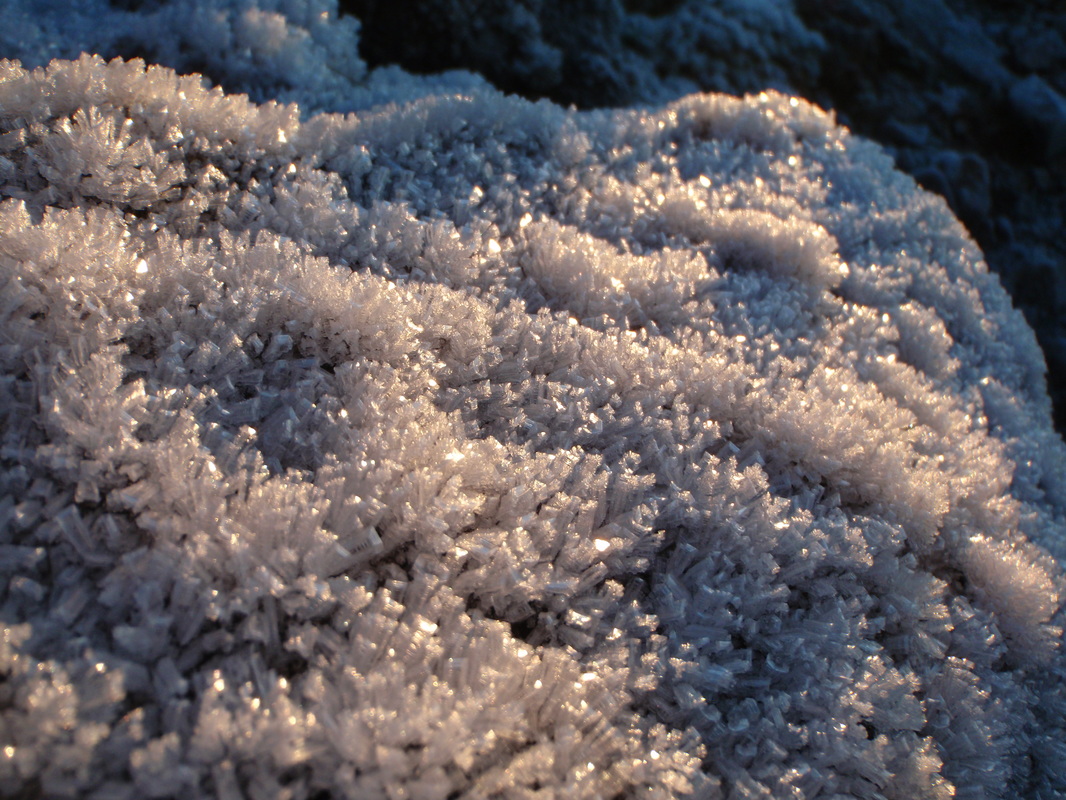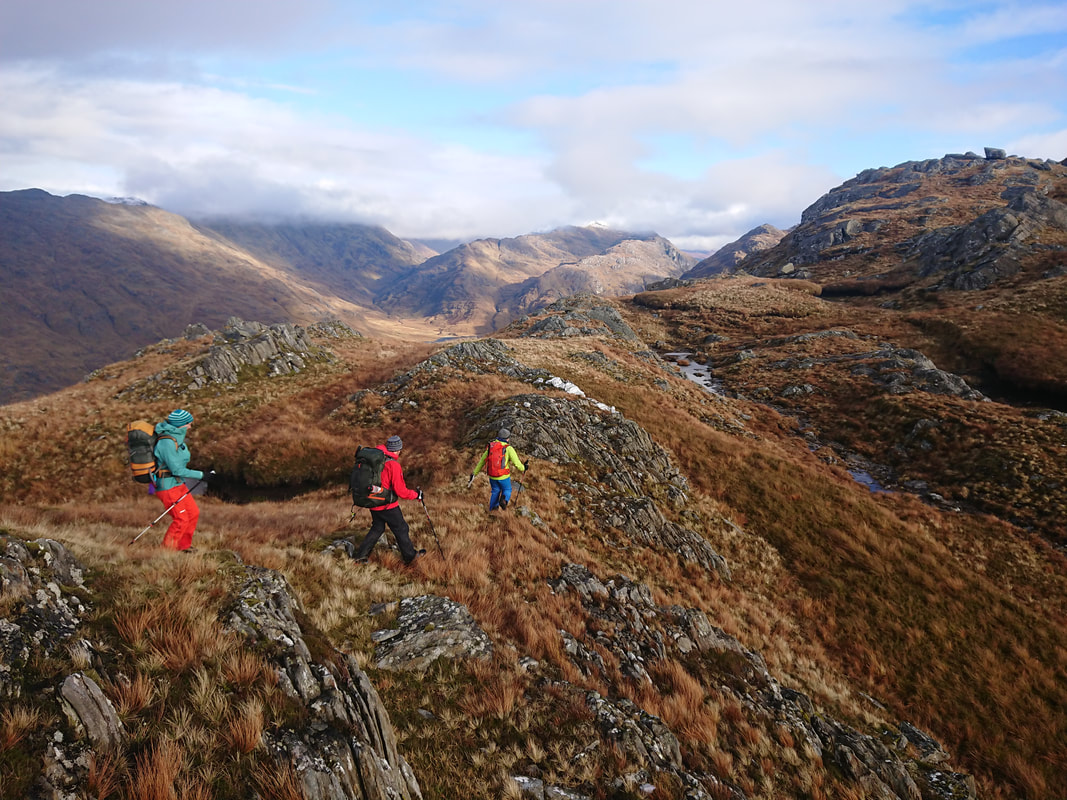|
Several avalanches were triggered by climbers and skiers yesterday on Ben Nevis and Aonach Mor. There were more today and one large one triggered by climbers in Coire nan Lochan. But we have not had any snow fall over the last couple of days so why has the avalanche hazard not reduced and why have people been caught out? There are two factors that might have had a role to play.
Windslab is formed by the wind transporting snow from the windy side of the mountain to the sheltered side. As the snow is transported it changes structure so that when it collects on sheltered slopes and gullies the snow forms a coherent slab. If this slab is on a slope steeper than, say, 30 degrees and if it is not very well stuck to the layer underneath it is prone to sliding off when triggered by people walking or skiing over the top of it. This process most often happens when it is snowing and there is a wind. However you don't need the snow fall. If there is loose snow on the ground on one aspect of slope (put there by a certain wind direction) and the wind changes direction the loose snow will be transported to the new sheltered aspect. We had lots of soft snow mostly on easterly aspects last week. Now we have easterly winds the snow is being transported over onto westerly aspects. Unfortunately though, this is a simplification of the process since high coires make the wind go round in all sorts of weird directions. So the redistribution of snow is mostly onto westerly aspects as well as gullies and hollows being cross loaded by the easterly wind, but also isolated areas that have been loaded by snow by a local wind direction. These isolated areas can be on any aspect of slope. So we need to be able to recognise the texture of wind blown snow so that when we step onto wind slab we know it straight away. Better still, if we can spot it in advance, we can avoid it altogether. Wind slab does have quite a distinctive look and texture so once you know how it looks and feels you will recognise it. In conditions like we have now we should be alert to pockets of wind slab anywhere. Secondly, in cold dry conditions for some time, faceted ice crystals can grow down in the existing snow pack. These faceted crystals can grow into a weak layer in the snow pack with no apparent change in texture or look on the surface. A layer of faceted crystals is therefore difficult to spot and is a tricky hazard to avoid. Faceted crystals are beautiful and delicate but also very weak. The layer of snow on top can be very poorly held in place by this layer and the crystals also help the top layer slide once triggered. To form faceted crystals you need a temperature gradient between the bottom of the snow pack and the surface. The bottom is always at or close to zero celcius so when we have cold weather the surface will be several degrees colder, forming a temperature gradient. When there is a difference of 10 degrees in a depth of one metre (or just one degree in a depth of 10cm) the gradient is steep enough to form faceted crystals. These form by water vapour being drawn through the snow pack from the ground to the surface by the temperature gradient. As the water vapour travels through the snow it can find a trigger to desublimate into ice crystals. Sometimes an icy layer in the snow pack can be the trigger but it can be something far less distinct too. We currently have a snow surface temperature of about -7C so in areas where the snow is 70cm deep or less we might well get faceted crystals growing. Once in place this weak layer can persist for a long time. Today there was an avalanche in Coire nan Lochan to the north of North Buttress on an easterly aspect. With the easterly wind blowing onto this slope you'd have thought there would not be much hazard on this slope. I don't know if this avalanche was caused by cross loading, a weak layer of faceted crystals or by the hazard that was on this slope before the easterly wind started blowing. But it is a good reminder that we all need to be avalanche aware all the time. Stay focused and make sure you can recognise wind slab.
0 Comments
Your comment will be posted after it is approved.
Leave a Reply. |
AuthorMike Pescod Self reliance is a fundamental principle of mountaineering. By participating we accept this and take responsibility for the decisions we make. These blog posts and conditions reports are intended to help you make good decisions. They do not remove the need for you to make your own judgements when out in the hills.
Archives
March 2024
|


 RSS Feed
RSS Feed
